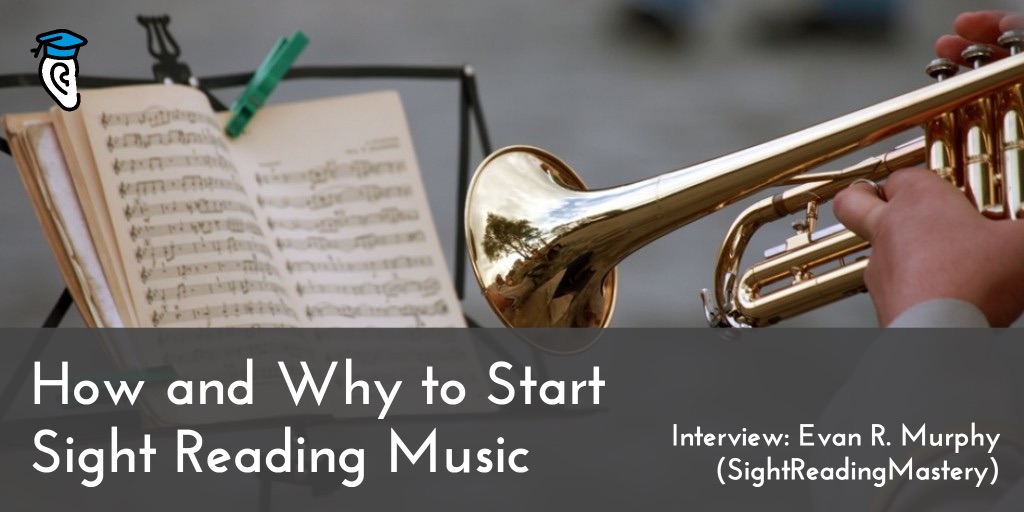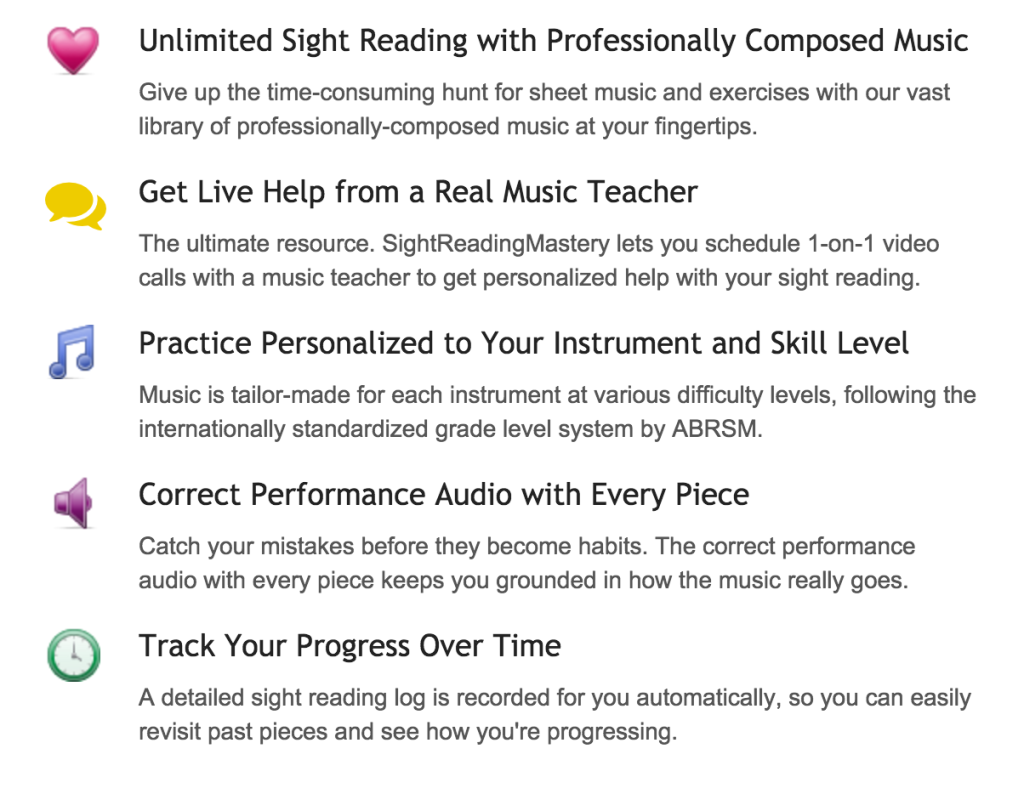Some musicians can easily read traditional music notation while others prefer to play by ear – but it doesn’t have to be one or the other! Learning to read music notation is an excellent complement to ear training and playing by ear. Sight reading is a frustrating task for many musicians, but learn some helpful techniques and find good examples to practice with and it can become easy and enjoyable.
Evan R. Murphy, founder of SightReadingMastery, recently visited the site to share his insights for singers on how to learn to sight read music in choir. We invited him back to ask his perspective and advice for all musicians who want to be able to sight read confidently on their instrument.

Background music? Oh I love background music! Especially the stuff they play in elevators. Very classy.
Or wait, no… When I call my internet company because I’m trying to watch The Voice but it won’t stream, and then they put me on hold and there’s that background music with the soprano saxophone playing. That’s my favorite…
Ah! Well, I studied music in college and got my BA in music at the University of Pittsburgh. About ten years ago I started teaching music, and since childhood I’ve been singing and playing various instruments.
Early on in life I was lucky to get some great lessons in ear training. That was hugely valuable for me, so I love how there are sites like Easy Ear Training now that help make that so accessible for people.
”Music is definitely more fun when you have a positive relationship with notation. It opens up all kinds of new opportunities.”
As for reading and sight reading music, I kind of had a block with it for a long time. I wasn’t very good at it, which made me self-conscious and want to avoid it. Later on I gained confidence, confronted that and finally started getting pretty good at sight reading. That was empowering! Music is definitely more fun when you have a positive relationship with notation. It opens up all kinds of new opportunities.
If you want to get better at sight reading quickly, then you need access to new music constantly. Hunting for sheet music is surprisingly difficult though. Even when you find pieces written for your instrument, they’re unlikely to be at the right difficulty for you. It’s also hard to verify that you’ve never seen a piece before, which is important in sight reading. The whole process can be very time-consuming and frustrating.
When there’s so much barrier to doing an activity, people aren’t likely to do it, even if they think the should. As a result, many musicians avoid sight reading. Teachers too. There was a study several years ago which found that although 86% of teachers they surveyed considered sight reading to be highly important or “the most important” skill, only 7% addressed it systematically with their students.
”People don’t want to spend their limited time learning to play random notes! They want to play real music.”
Some websites have tried to solve the problem using computer-generated exercises. This does do the job of giving you lots of music you’ve never seen before. The thing is, people don’t want to spend their limited time learning to play random notes! They want to play real music. It’s interesting technology, but I think we’re a ways off from it being good enough to make sense.
 Hire professional composers. We have a team of talented composers who are constantly writing new living, breathing pieces of music for the instruments they specialize in. You’re guaranteed to have never seen these pieces before, because they were written just for SightReadingMastery. Composers and sight readers are the perfect match – one writes music, the other reads it.
Hire professional composers. We have a team of talented composers who are constantly writing new living, breathing pieces of music for the instruments they specialize in. You’re guaranteed to have never seen these pieces before, because they were written just for SightReadingMastery. Composers and sight readers are the perfect match – one writes music, the other reads it.
As I was saying earlier, sight reading music at the right difficulty level is important. It’s too common for people to try sight reading music that’s too difficult for them, then get discouraged and give up. So you need a well-designed grade level system like ours.
Another problem with sight reading traditional sheet music is, how do you know you’re playing it correctly? If you can’t figure out how some part of the music goes, then you’re stuck unless you can hunt down a recording. All our music comes with audio of a correct performance to help you evaluate your playing and catch mistakes before they become habits.
Sometimes you can’t do it all on your own. We provide a way for you to get live help from a music teacher when you need it. So if you’re a SightReadingMastery member, then you can schedule a private lesson with one of our music teachers over video call.
We also have tools that track your progress, a plethora of sight reading tips and lots more.
Definitely not just for exams!
The better you are at sight reading, the faster you can learn new music. This means you can:
- Learn way more music and vastly expand your repertoire
- Spend less time rehearsing
- Increase your musician wage if you work in music or aspire to (for example, if you can spend half as much time rehearsing for a gig, then you’ve doubled your hourly rate)
Sight reading is also hugely important for auditions, which are the gateways to many of the the best opportunities in music. And it’s great for impressing your friends – they can open up the songbook to any page and you can play it. Some people have even become famous for sight reading on YouTube.
Perhaps most importantly, learning to sight read helps people overcome the anxiety many of have toward playing new music, increasing our enjoyment and helping us become happier musicians.
At advanced levels it helps, but to get started sight reading you only need to know the basics of reading music, which anyone can pick up.
Start simple. As I mentioned earlier, trying to sight read music that’s too difficult is a very common mistake.
Learn to read rhythms and notes separately before combining them. We recommend this approach to a lot of beginners at SightReadingMastery. We have a tool to help with learning to read notes and we’re working on one for rhythms.
There’s an easy way you can practicing rhythm reading with any piece of music though: Just ignore the variation in notes and play or sing it all on a single note. That’s sort of the DIY approach that I’d recommend until our rhythm reading tool is released.
There’s no better way to learn than by doing. If you come on over to sightreadingmastery.com, we have a free sight reading sample right on the homepage that is a great way to get started. Then whenever you’re ready to try a full SightReadingMastery membership, you can see our plans and start a free trial here.
As you work on your ear training, don’t neglect learning about traditional music notation too. If you have been frustrated by learning to sight read, or you’ve never even given it a try, we highly recommend checking out SightReadingMastery’s free examples, available through their website at SightReadingMastery.com.








